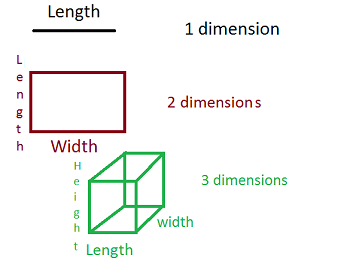Understanding the Real Costs of Opening a Martial Arts School: A Complete Guide
Introduction: What Does It Take to Open a Martial Arts School?
Opening a martial arts school is a dream for many passionate practitioners, but understanding the associated costs and planning accordingly is crucial for long-term success. Expenses can vary widely depending on factors such as location, facility size, amenities, and your business model. This comprehensive guide offers a detailed look at the costs, actionable steps, and alternatives for aspiring martial arts school owners.
Initial Investment: What to Expect
The initial investment to launch a martial arts school typically ranges from $10,000 to $50,000 , though some sources cite averages closer to $50,000 for a modest facility, and potentially much higher for larger or more sophisticated schools [1] [2] [3] . For schools with extensive amenities and multiple training areas, costs can reach $100,000 or more [2] . When budgeting, you should consider the following categories:
- Lease Deposit and Rent: Expect monthly rent to range from $1,000 to $10,000, depending on your city and the size of your space. A lease deposit often ranges between $1,950 and $6,000 [3] .
- Renovations and Fit-Out: Renovation needs vary. Basic adjustments may cost $5,000, but full renovations can exceed $30,000, especially for larger facilities [1] .
- Equipment: Mats, wall padding, training gear, and uniforms typically require a minimum of $5,000 to $10,000 for a small-to-medium school [3] .
- Business Registration and Permitting: Registering your business, obtaining necessary permits, and legal consultations generally cost between $1,000 and $5,000 [5] .
- Insurance: Liability and property insurance are essential and can cost $1,000 to $3,000 annually [1] .
- Marketing and Branding: Initial marketing campaigns, website development, and branding often start at $2,000, but can be scaled up depending on your strategy [5] .
For those with a larger vision, such as multiple training areas, fitness amenities, or a retail pro shop, initial costs can approach $100,000 to $800,000 [2] .
Ongoing Operational Costs
Once your school is open, you will encounter recurring monthly expenses. These typically include:
- Rent: $1,950-$6,000 per month, varying by region, facility size, and amenities [3] .
- Utilities and Internet: $150-$2,000 monthly, depending on facility size and climate [1] .
- Insurance: $40-$250 per month, often paid annually [3] .
- Staff Salaries: If you hire instructors or administrative staff, expect to pay $20-$50 per hour per instructor [5] .
- Software and Administration: Gym management software, payment processing, and administrative costs add $50-$150 monthly [2] .
- Marketing and Retention: Ongoing advertising, social media, and student retention programs may require $500-$1,000 monthly, but can be scaled according to growth.
It is recommended to budget for at least 6 months of operating expenses before you open, as most schools do not break even immediately [3] .
Alternative Models: Reducing Your Startup Costs
You do not need to start with a fully equipped, large-scale dojo. Many successful school owners begin small and expand as demand grows. Consider these alternative approaches:
- Community Centers and Schools: Rent space in local schools or community facilities at much lower costs. Some school programs report startup costs as low as $2,500 and monthly expenses under $500 [4] . This allows you to build your student base and reputation before investing in a larger facility.
- Mobile or Pop-Up Classes: Offer classes in parks, recreation centers, or via pop-up events to minimize overhead and equipment costs. This is an excellent way to test your market and build a following.
- Gradual Scaling: Begin with minimal equipment and basic amenities, then reinvest profits as your business grows. Many schools start by offering group classes and add private lessons, workshops, or merchandise sales over time [5] .
- Franchise Models: Some franchise opportunities offer operational support, branding, and marketing systems for a fee, which can help reduce risk but may increase upfront costs. Always verify the franchise’s reputation and support structure before committing.
These models allow you to enter the market with less capital, assess demand, and reduce your financial risk.

Source: wod.guru
Step-By-Step Implementation Guide
Opening a martial arts school involves a series of structured steps. Here is a proven, actionable roadmap:
- Define Your Business Model: Determine if you will offer group classes, private lessons, specialty workshops, or a combination. Decide on your style(s), target market, and teaching approach.
- Market Research: Analyze your local area for demand, competition, and pricing norms. Visit nearby dojos and speak with community members to gauge interest.
- Secure Initial Funding: Calculate your total startup and first 6 months’ operating costs. Options include personal savings, business loans, or private investors. If you are unfamiliar with small business loans, you can search for “SBA loans for small businesses” and consult with local banks or credit unions.
- Choose and Prepare Your Location: Start by searching for affordable rental spaces or community facility partnerships. If you plan to lease commercial space, factor in all associated costs, including deposits, renovations, and insurance.
- Legal Registration and Insurance: Register your business with your state or local government. Obtain liability insurance and any specialized coverage required for martial arts instruction. If you are unsure where to register, you can visit your state’s official business portal or search online for your state’s “business registration” page.
- Purchase Equipment: Prioritize safety mats, wall padding, and basic training gear. Start small and purchase higher-end equipment as your student base grows.
- Hire and Train Staff: If you need additional instructors, source candidates with relevant experience and certifications. Be prepared to pay competitive rates to attract high-quality staff.
- Develop Your Marketing Strategy: Build a website and establish a presence on major social media platforms. Consider introductory offers, local advertising, and partnerships with schools or youth organizations. If you need professional help, search for “local marketing agencies specializing in fitness or martial arts.”
- Launch and Build Your Community: Host an open house, free workshops, or demonstration events to attract your first students. Focus on delivering outstanding instruction and fostering a welcoming environment.
Real-World Examples and Case Studies
Many successful martial arts schools have started small and scaled up over time. For example, schools that initially operated in community centers or shared spaces reported startup costs as low as $2,500, while those investing in large, dedicated facilities often spent $50,000 or more [4] [1] . Schools offering specialty programs, such as after-school classes or summer camps, have found these services effective for increasing revenue and reaching break-even more quickly.
Some school owners reduced costs by seeking early partnerships with local sports clubs, offering free trial classes, or negotiating revenue-sharing arrangements with facility owners. These creative solutions can significantly lower financial barriers to entry and accelerate your path to profitability.

Source: zenplanner.com
Potential Challenges and Solutions
Opening a martial arts school is not without obstacles. Common challenges include:
- Cash Flow: Many new schools take months to become profitable. To avoid running out of funds, budget for at least 6 months of operating expenses and consider starting small.
- Student Recruitment: Building a student base takes time. Focus on community engagement, offer referral incentives, and maintain a strong online presence.
- Facility Costs: High rent can strain finances. Consider renting during off-peak hours, partnering with community organizations, or starting in shared spaces.
- Retention: Keeping students engaged is essential. Regularly update your curriculum, hold special events, and solicit feedback to improve your programs.
By anticipating these challenges and planning accordingly, you can set your school up for sustainable growth.
Alternative Pathways for Low-Cost Entry
If you have limited capital, you can still launch a martial arts business:
- Offer classes at local schools, parks, or recreation centers, minimizing overhead [4] .
- Partner with existing gyms or fitness studios for space-sharing arrangements.
- Begin with small group classes or workshops and expand as demand increases.
- Utilize online marketing and social platforms to reach potential students with minimal cost.
These strategies allow you to build experience, reputation, and a student base without significant initial investment.
References
- [1] Exercise.com (2024). How much does it cost to open a martial arts school?
- [2] Wod.Guru (2025). How much does it cost to open a martial arts school?
- [3] Gymdesk (2025). What is the average cost of opening a martial arts school?
- [4] US Martial Arts (2024). Open a Dojo.
- [5] Wod.Guru (2025). How to Open a Martial Arts School in 2024 (Step-By-Step Guide).
MORE FROM eboxgo.com













